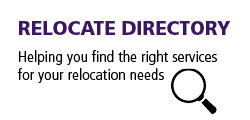Why digital transformation creates a retention problem for certain types of employees
Becki Hyde, practice lead at Agile Practice Leadership Enablement and Sean Olszewski, practice lead for Agile Practice Leadership Enablement, Pivotal Software look at the four personality types that need to be managed carefully during digital transformation.

1. Frustrated converts
The frustrated convert gets exposure to a new way of working and is then forced to go back to the old way – to what is often perceived as a cumbersome process, wasted time, dead ends, and a lack of autonomy. These blockers often occur due to senior leadership being brought into an effort, but failing to cascade the intent and importance of this to middle management. Because of this breakdown in communication, middle management doesn’t allow individual contributors the flexibility they need to deliver effectively, creating frustration and ultimately causing them to leave.To prevent turnover of otherwise engaged and excited employees, work toward support for the change at all levels of your organisation and provide air cover until that is achieved. Having one or two key allies at the manager, director and vice president levels goes a long way toward preventing converts from becoming frustrated. By knowing they have direct leadership support, employees will be able to weather the challenges of introducing change for much longer than if they feel they are doing it alone.2. High achievers
High achievers are employees who thrive in an agile environment, becoming so effective at what they do that they begin to be courted by other companies or seek promotion opportunities elsewhere. Time and time again, we see this issue come up as companies undergo change and the best way to combat it is to have a strong, protected culture of learning, with a fair and competitive compensation structure.But supporting high achievers isn’t just about salary and benefits. The most engaged and motivated participants in change can become disengaged if they aren’t given opportunities that align with their interests and professional development – and have a measurable impact on the business. After seeing success on their teams, some employees naturally want to spread the principles and practices they’ve become so passionate about. This allows them to grow professionally and to have a larger positive influence on company culture.Related articles
- UK scheme to retrain workers ousted by AI
- UK tech firms looking abroad for sales, skills
- How To Tackle The Employee Retention Challenge
3. Opt-outs
When people are asked to change the way they work, some will self-select out. This is especially likely in companies where employees stay in roles long-term and develop well-understood processes over years of experience. Opt-outs don’t like or aren’t convinced of how effective this new way of working will be. It’s not uncommon for people to have seen many attempts at changing their enterprise and are, therefore, sceptical of further change.As you introduce change, think ahead to how you can support these potential opt-outs. They are normally better suited for work that isn't related to the company's digital transformation efforts, so the change may represent an opportunity to become involved in other areas of the business. They can, however, prove to be effective advisors in their area of expertise or perhaps there are other teams in the company that could benefit from their experience and knowledge. Regardless, if you don’t consider these employees’ concerns and manage their transitions, they can poison others who are interested, but nervous about the change.4. Graduates
Some of your best team members will get promoted, perhaps onto a different team or into a new business unit. On the surface, this is good news, but if people leave early or several leave in quick succession, the team leading the change may struggle to maintain maturity and momentum in their absence.Because it is important to keep teams intact until there are people ready to backfill leadership roles, start succession-planning early – even down to the individual team level. While you can encourage people to stay in place for some time by providing them with interesting work and fair compensation, preparing for the future early ensures your efforts won’t stall out. When you are ready for people to move on, consider planning for graduates to seed new teams in pairs or small groups, so that they can support one another and have a greater influence on others.Final thoughts
While high turnover feels alarming, it can be a good sign. It’s evidence that you’re effecting change. Instead of feeling powerless, proactively preparing for and guiding changes in staffing can keep your transformation on track. While you may not prevent people from leaving, you can learn valuable lessons from the reasons they leave, which you can then leverage into actionable insights that help you on your journey.For more digital news and views, visit our dedicated Technology section.
Subscribe to Relocate Extra, our monthly newsletter, to get all the latest international assignments and global mobility news.Relocate’s new Global Mobility Toolkit provides free information, practical advice and support for HR, global mobility managers and global teams operating overseas. Access hundreds of global services and suppliers in our Online Directory
Access hundreds of global services and suppliers in our Online Directory
©2025 Re:locate magazine, published by Profile Locations, Spray Hill, Hastings Road, Lamberhurst, Kent TN3 8JB. All rights reserved. This publication (or any part thereof) may not be reproduced in any form without the prior written permission of Profile Locations. Profile Locations accepts no liability for the accuracy of the contents or any opinions expressed herein.









































